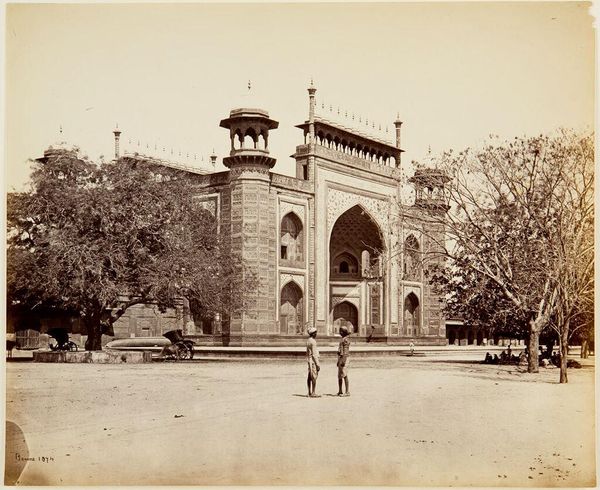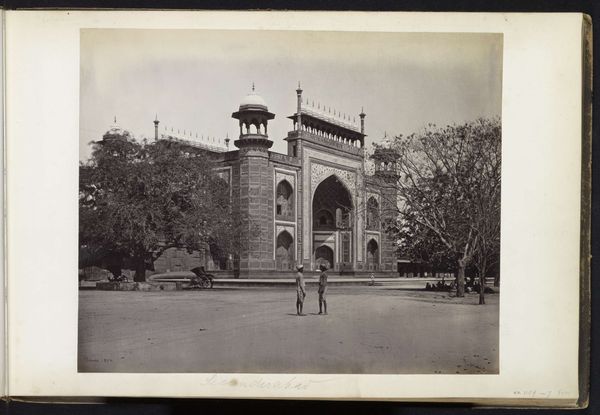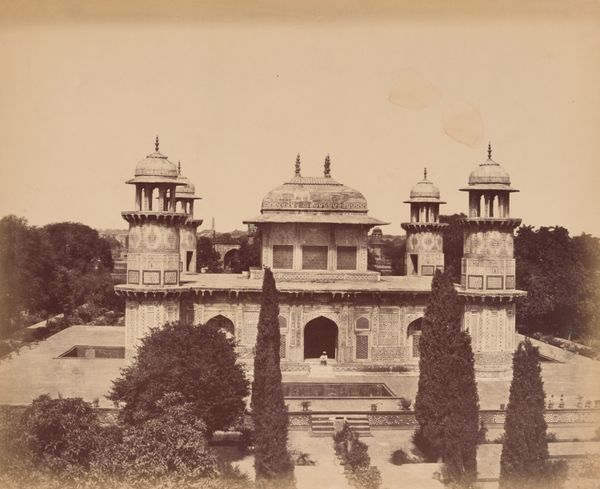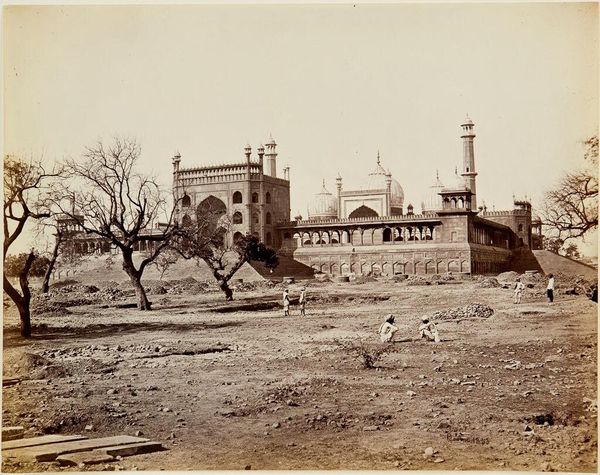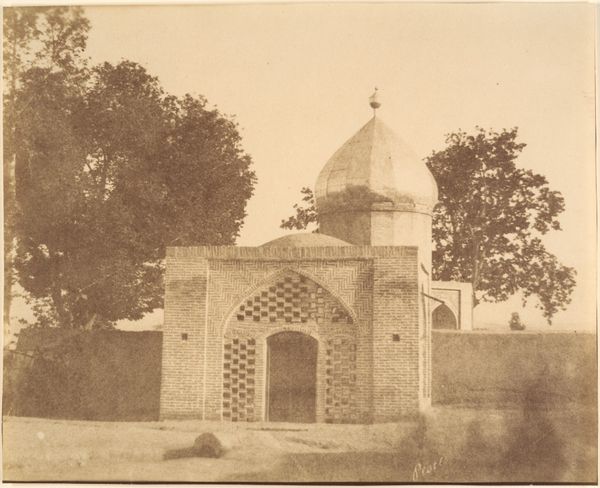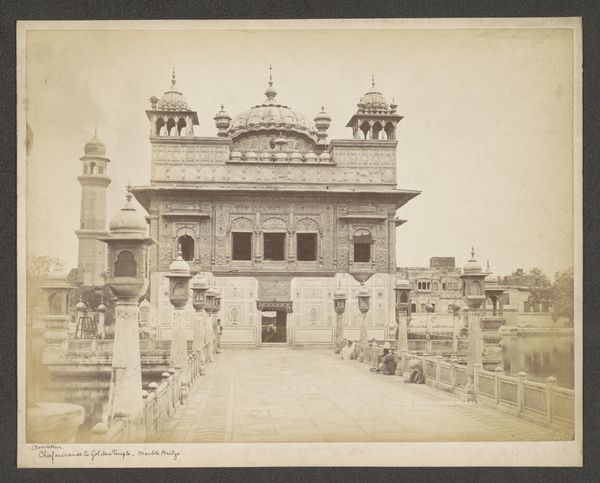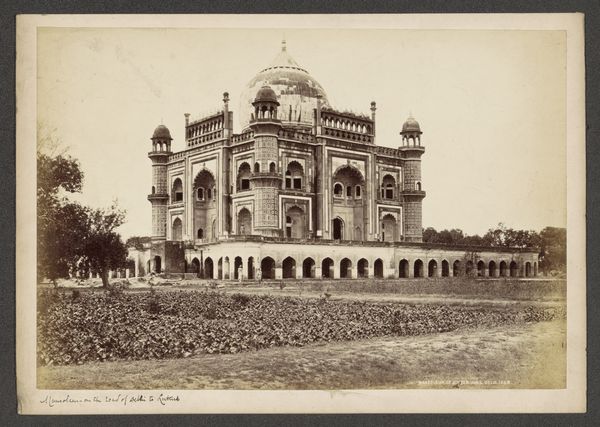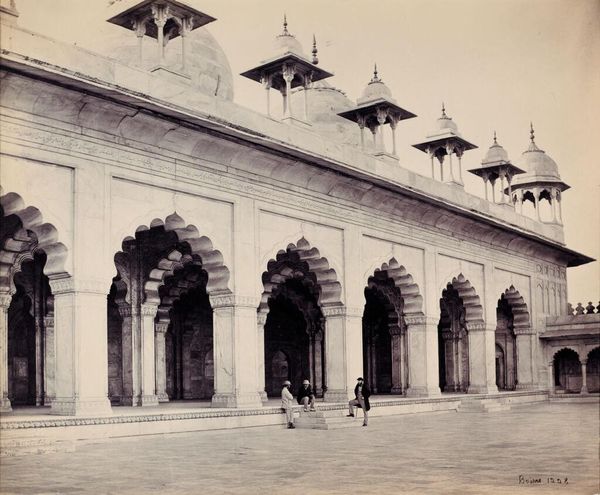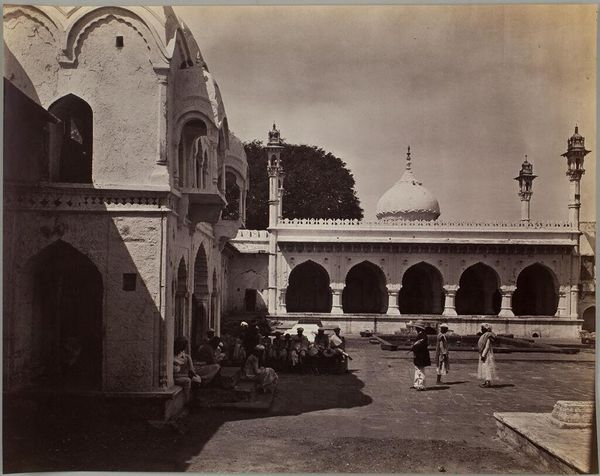
print, photography
#
black and white photography
# print
#
landscape
#
outdoor photograph
#
photography
#
ancient-mediterranean
#
monochrome photography
#
cityscape
#
islamic-art
#
monochrome
Dimensions: height 100 mm, width 192 mm
Copyright: Rijks Museum: Open Domain
This albumen print of the Darwaza-i-rauza, the entrance gate of the Taj Mahal, was captured by Samuel Bourne in India, sometime in the late 19th century. The photographic process itself involved a complex combination of craft and chemistry. To make this image, Bourne would have coated a sheet of glass with collodion, sensitized it with silver nitrate, exposed it in his camera, and then developed it, all before the plate dried. The resulting negative was then contact-printed onto albumen paper, which had been coated with egg white to create a smooth surface. Think about the labor involved, from mixing chemicals to managing light and shadow in the field. Bourne embraced these challenges, and through his skillful manipulation of materials, he produced an iconic image. The monochromatic tones and the sharpness of the architectural details highlight the artistry of both the Taj Mahal’s construction and Bourne’s photographic method. Photographs like these were widely circulated, shaping Western perceptions of India and contributing to the global trade in images. They remind us that even seemingly straightforward documentation is deeply entwined with social, economic, and artistic considerations.
Comments
No comments
Be the first to comment and join the conversation on the ultimate creative platform.
